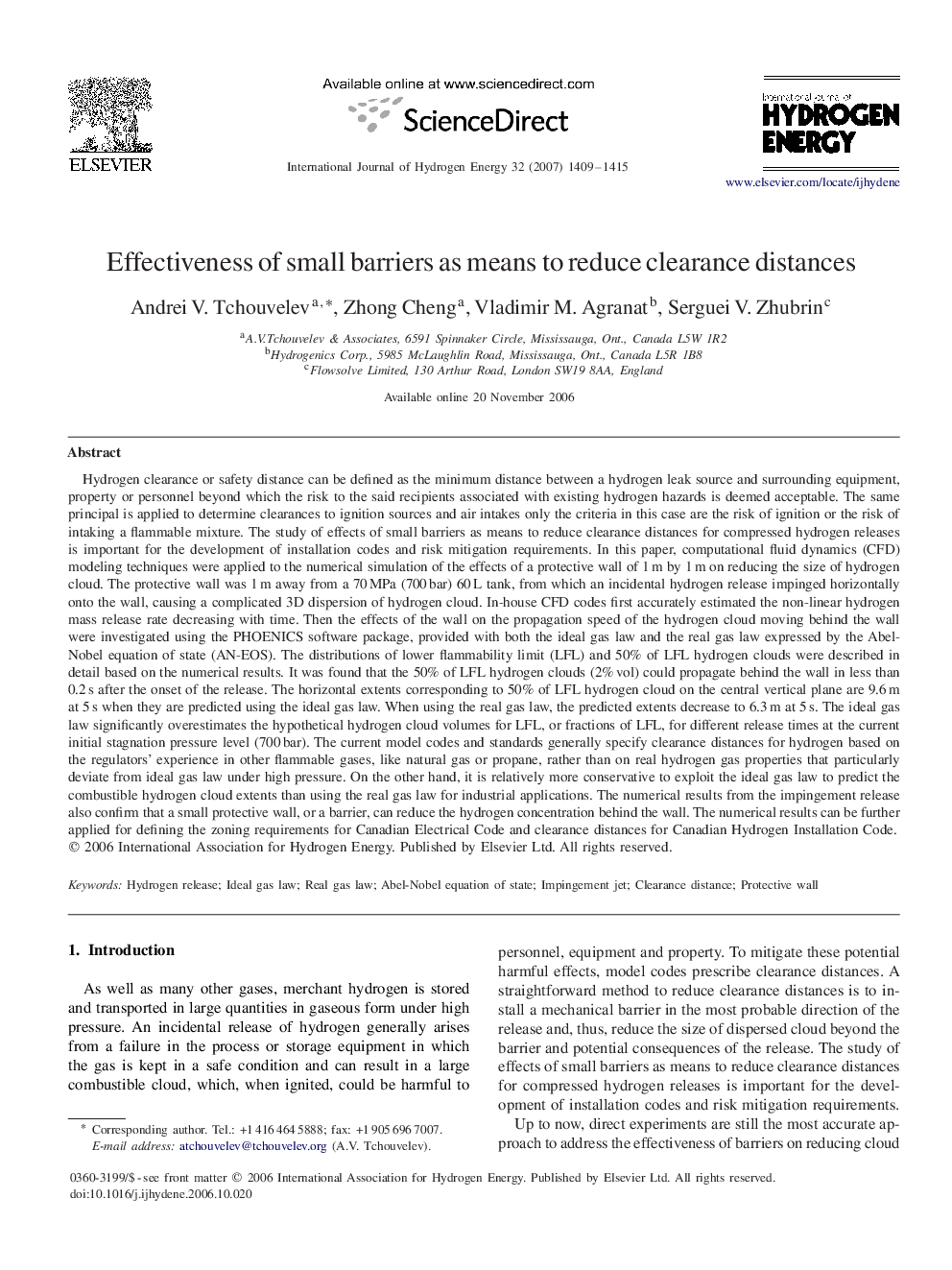| کد مقاله | کد نشریه | سال انتشار | مقاله انگلیسی | نسخه تمام متن |
|---|---|---|---|---|
| 1280481 | 1497673 | 2007 | 7 صفحه PDF | دانلود رایگان |

Hydrogen clearance or safety distance can be defined as the minimum distance between a hydrogen leak source and surrounding equipment, property or personnel beyond which the risk to the said recipients associated with existing hydrogen hazards is deemed acceptable. The same principal is applied to determine clearances to ignition sources and air intakes only the criteria in this case are the risk of ignition or the risk of intaking a flammable mixture. The study of effects of small barriers as means to reduce clearance distances for compressed hydrogen releases is important for the development of installation codes and risk mitigation requirements. In this paper, computational fluid dynamics (CFD) modeling techniques were applied to the numerical simulation of the effects of a protective wall of 1 m by 1 m on reducing the size of hydrogen cloud. The protective wall was 1 m away from a 70 MPa (700 bar) 60 L tank, from which an incidental hydrogen release impinged horizontally onto the wall, causing a complicated 3D dispersion of hydrogen cloud. In-house CFD codes first accurately estimated the non-linear hydrogen mass release rate decreasing with time. Then the effects of the wall on the propagation speed of the hydrogen cloud moving behind the wall were investigated using the PHOENICS software package, provided with both the ideal gas law and the real gas law expressed by the Abel-Nobel equation of state (AN-EOS). The distributions of lower flammability limit (LFL) and 50% of LFL hydrogen clouds were described in detail based on the numerical results. It was found that the 50% of LFL hydrogen clouds (2% vol) could propagate behind the wall in less than 0.2 s after the onset of the release. The horizontal extents corresponding to 50% of LFL hydrogen cloud on the central vertical plane are 9.6 m at 5 s when they are predicted using the ideal gas law. When using the real gas law, the predicted extents decrease to 6.3 m at 5 s. The ideal gas law significantly overestimates the hypothetical hydrogen cloud volumes for LFL, or fractions of LFL, for different release times at the current initial stagnation pressure level (700 bar). The current model codes and standards generally specify clearance distances for hydrogen based on the regulators’ experience in other flammable gases, like natural gas or propane, rather than on real hydrogen gas properties that particularly deviate from ideal gas law under high pressure. On the other hand, it is relatively more conservative to exploit the ideal gas law to predict the combustible hydrogen cloud extents than using the real gas law for industrial applications. The numerical results from the impingement release also confirm that a small protective wall, or a barrier, can reduce the hydrogen concentration behind the wall. The numerical results can be further applied for defining the zoning requirements for Canadian Electrical Code and clearance distances for Canadian Hydrogen Installation Code.
Journal: International Journal of Hydrogen Energy - Volume 32, Issues 10–11, July–August 2007, Pages 1409–1415